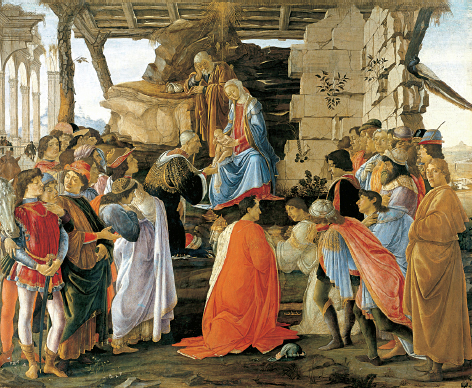Understanding World Societies:
Printed Page 430
INDIVIDUALS IN SOCIETY
Cosimo and Lorenzo de’ Medici

The Renaissance is often described as a time of growing individualism, a development evidenced in the era’s many personal portraits and individual biographies. But a person’s family also remained important, even for those at the very top of society. The Medici of Florence were one of Europe’s wealthiest families and used their money to influence politics and culture. The Medici got their start in banking in the late fourteenth century, with smart bets on what would happen politically in turbulent Italy and the adoption of the best new business practices. By the early fifteenth century the Medici bank had branches in Rome, Pisa, London, and other important European cities, and it served as the pope’s primary banker.
Cosimo (1389–
Cosimo supported artists and thinkers, sponsoring what became known as the Platonic Academy, an informal group of Florence’s cultural elite named in honor of Plato’s famous academy in ancient Athens. Here Marsilio Ficino and other humanists translated Plato’s works into Latin, making Greek learning available to a much wider European audience. Cosimo collected books and manuscripts from all over Europe, assembling an impressive library within the equally impressive Medici palace that he built in the heart of Florence.
Like his grandfather, Lorenzo was the head of the Medici bank and the de facto ruler of Florence. He, too, survived an attempt to oust him, this one led by the rival Pazzi family. The Pazzi went beyond simply trying to exile the Medici, and instead tried to murder them: Lorenzo was wounded and his brother Giuliano was killed. Medici revenge was swift and many Pazzi were executed, which led the pope — who sided with the Pazzi — to back an invasion of Florence. Lorenzo ended the conflict through personal diplomacy, and the constitution of Florence was modified to favor the Medici.
Lorenzo came to be known during his lifetime — with no irony — as “Lorenzo the Magnificent,” primarily for his support for learning and the arts. As they had in Cosimo’s day, a group of poets, philosophers, and artists spent much of their time at the Medici palace, where Lorenzo patronized writing in Italian as well as humanist scholarship in Latin and Greek. Lorenzo himself wrote love lyrics, sonnets, pastorals, odes, and carnival songs, many of them meditations on nature or on the fleetingness of human life: “Fair is youth and void of sorrow; / But it hourly flies away. / Youths and maids, enjoy today; / Nought ye know about tomorrow.” The group included the humanists Ficino and Pico della Mirandola and the artists Michelangelo, Leonardo da Vinci, and Botticelli, all of them influenced by Platonic concepts of beauty and love. Botticelli’s Adoration of the Magi, painted while he was at the Medici court, shows Cosimo (who was dead by the time the picture was painted) kneeling in front of the Virgin Mary as one of the three kings giving gifts to the infant Jesus, while a black-
As Lorenzo reached his forties, many of the Medici bank branches began to collapse because of bad loans, and his diplomacy was not successful in maintaining a peaceful balance of power. Like many others in Florence, Lorenzo came under the spell of the charismatic preacher Savonarola, who preached that God would punish Italy for its vice and corruption. Lorenzo died before Savonarola’s prediction appeared to come true when the French invaded Italy in 1494. The Medici were again ousted, but just as before, they returned, and later became the official and hereditary rulers of Florence and its environs as the Grand Dukes of Tuscany.
QUESTIONS FOR ANALYSIS
- Renaissance people were fascinated by the quality of virtù, the ability to shape the world around one according to one’s will. How did Cosimo and Lorenzo exhibit virtù?
- The Medici created a model for very wealthy people of how to obtain political and cultural influence. Can you think of more recent examples, including contemporary ones, of those who followed this model?

DOCUMENT PROJECT
What role did patrons play in shaping Renaissance artistic and intellectual life? Examine paintings and letters by Renaissance artists, and complete a quiz and writing assignment based on the evidence and details from this chapter. See Document Project for Chapter 15